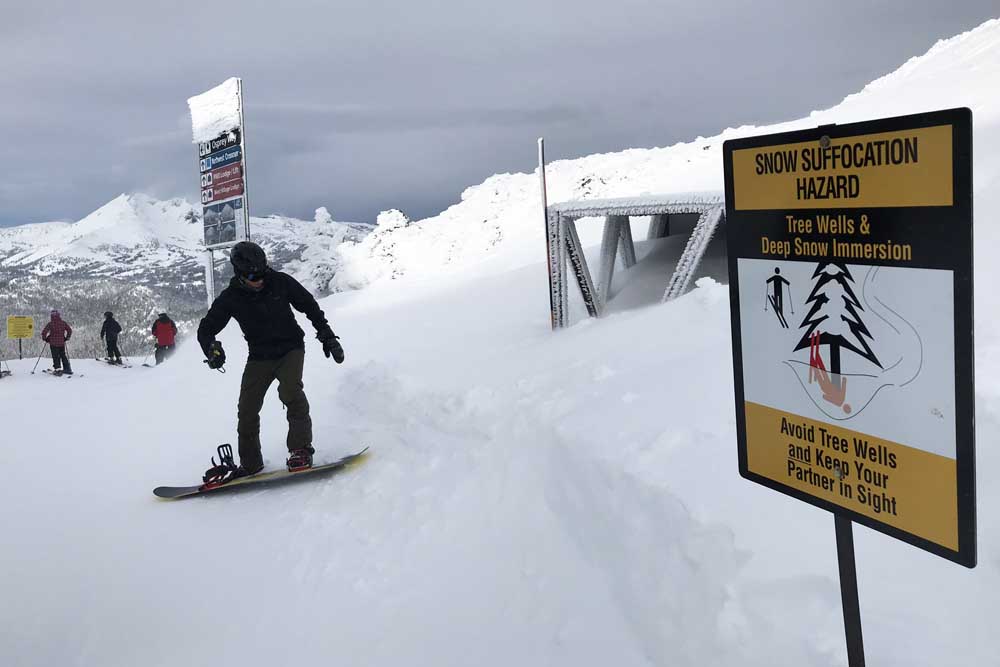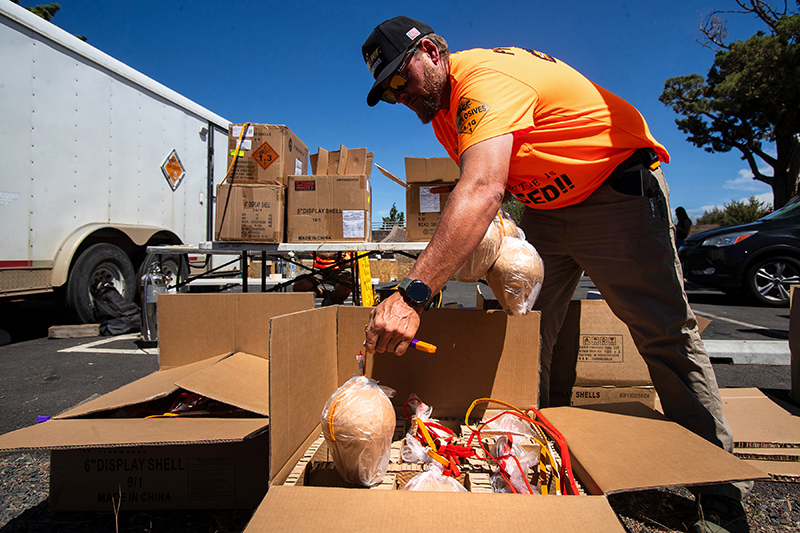Tree wells are a risk to every skier, snowboarder. Here’s how to avoid them.
Published 1:00 pm Thursday, March 23, 2023

- In this 2019 Bulletin file photo, a sign warns skiers and snowboarders of the dangers of tree wells and the potential of snow suffocation at the top of the Northwest Express chair at Mt. Bachelor ski area.
As snow piles up in the mountains, skiers and snowboarders are keeping their eyes out for one of the biggest risks at ski resorts — tree wells.
Tree wells are formed by unstable snowpack building around the base of a tree. When the snow doesn’t build under lower hanging branches, it creates deep pockets of snow and air, essentially an invisible hole. The ground might look stable enough to stand on, but when a person falls in, it can be extremely difficult to escape. The more you wiggle, the more the snow collapses in, the deeper you go.
Getting caught underneath, you can suffocate. People passing by might not even see you.
“We’re having a conversation about living and dying,” said Dan McGarigle, owner of Pine Mountain Sports in Bend, who has lost two friends in tree wells. Each of them fell in head-first, he said.
Each year, droves of shredders at ski resorts across the Pacific Northwest are caught in tree wells. Since 2018, three people have died after falling into tree wells at Mt. Bachelor ski area. Experienced skiers urge people to use caution when skiing near trees.
“The greatest number of accidents generally occur following a big storm cycle — the more fresh snow, the higher the risk,” said a statement on Mt. Bachelor’s website.
Read: Central Oregon trails and conditions report
Tree wells can form around any tree on any part of the mountain, no matter the density of trees or ease of the run. The best thing a person can do to avoid them is just that — ski around and stay away, skiers say.
There isn’t an easy way to look at an individual tree and identify if it has a dangerous tree well. People should treat all tree wells as dangerous, skiers say.
Safety experts say you should always ski with a partner. People skiing near trees should stay with their buddy and clearly communicate where they’re going and what their intentions are. Skiers should freely voice their opinion about potential risks and their comfort zone on a route, McGarigle said. While skiing down, staying within sight of your buddy is key, he said.
If you fall into a tree well, stay calm. Then, McGarigle said: “You should just do whatever you can to get out.”
Read: Find out more about the Central Oregon outdoors
According to deepsnowsafety.org, a website that provides tips and information about tree wells and other snow immersion suffocation accidents, people caught in a tree well should:
- Yell or use a whistle to get your partner’s attention.
- Do whatever you can to keep your head above the surface of the snow, including rolling, grabbing tree branches or the tree trunk. If possible, keep your feet below level of your head.
- If you become immersed, make a space around your face and protect your airway — resist the urge to struggle, it could compromise your airspace and entrap you further.
- Stay calm to conserve air.
- Trust your partner is on their way.
- If possible, use your cell phone to call ski patrol or the resort’s emergency number.
Should your buddy fall in a tree well, the website offers this advice:
- Don’t leave to get help — Stay with your partner.
- Call for additional resources. Use a whistle or yell for assistance. If possible, call ski patrol or the resort’s emergency phone number.
- Evaluate scene safety for yourself.
- IMMEDIATELY begin snow immersion rescue efforts. Go directly for the airway, and keep it clear, be careful not to knock more snow into the hole. Clear any snow from the airway and continue necessary first aid or extrication effort.
- Do not try to pull victim out the way they fell in. Instead, determine where the head is and tunnel in from the side. When tunneling directly for the airway, be careful not to knock more snow into the hole. Continue expanding the tunnel to the airway until you can extricate the body. Efficient “strategic shoveling techniques” with multiple rescuers is very useful.








